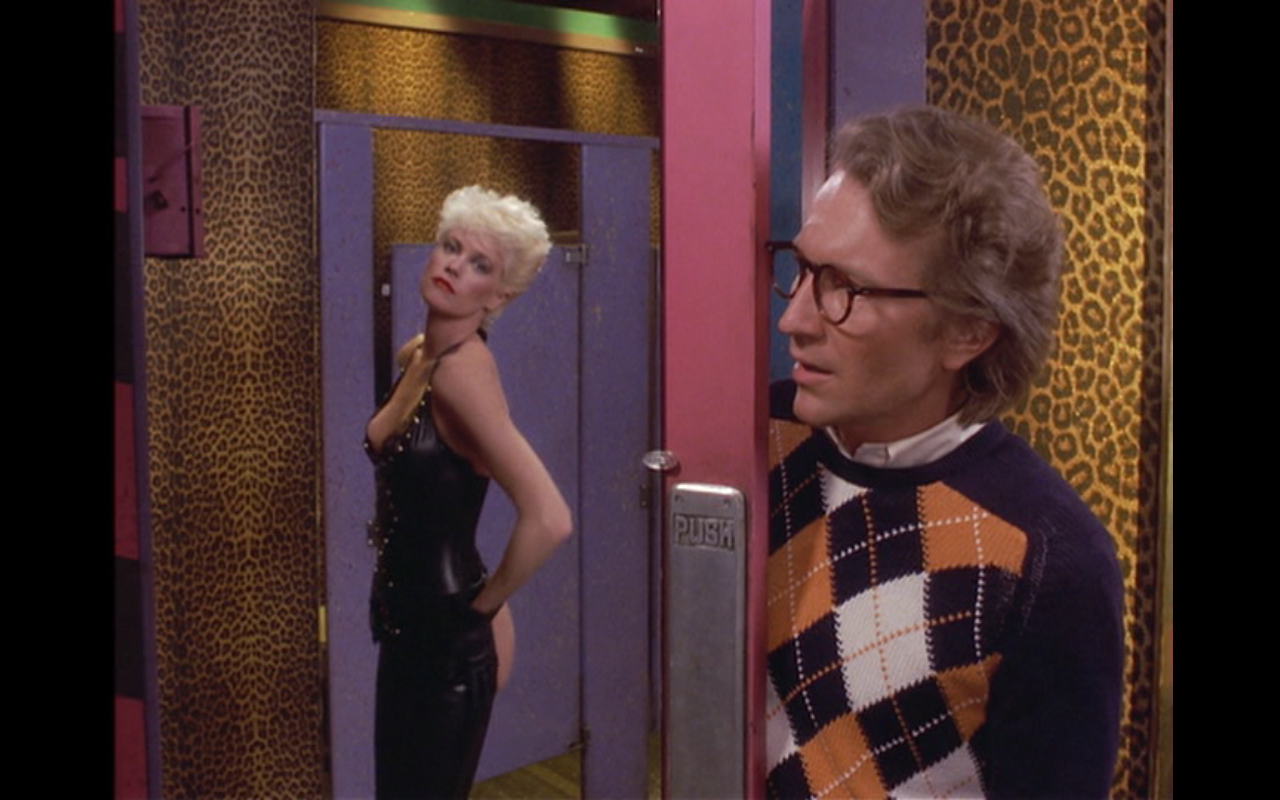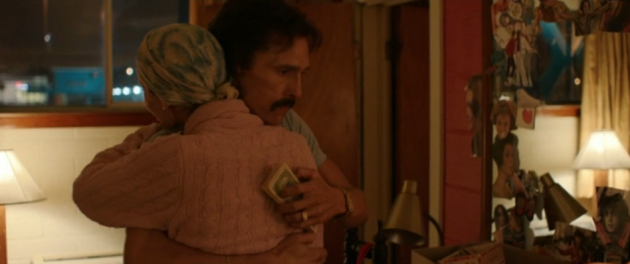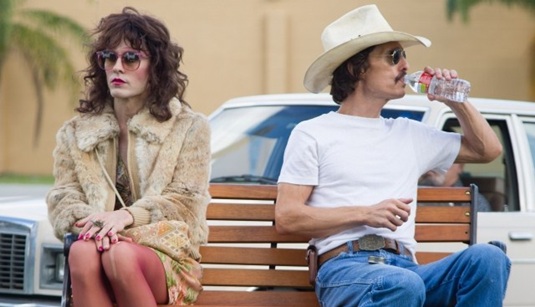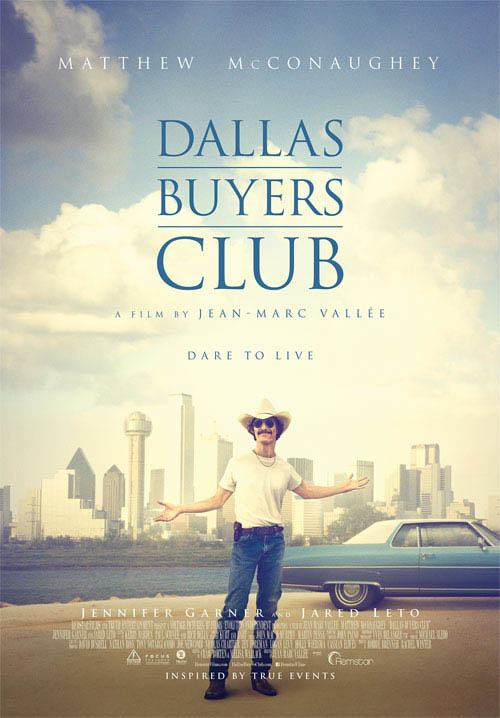Brian de Palma started his career in 1968 with the full-length features Murder à la Mod and Greetings. Before these he only made a few short-films. In France at this time there were the mass student riots and at Cahiers du cinéma their focus went from from Hollywood cinema to politics, from writing reviews to engaging with theory. So when Cahiers in the late Seventies was slowly transitioning back to writing about more mainstreams films they were still writing about more engaged works, like those by Jean-Marie Straub and Chantal Akerman and Wim Wenders. But they were now again writing about more mainstream productions and in this period that meant films like Annie Hall, Star Wars, Jaws and Apocalypse Now. They needed new director figures to look up too that, like themselves, were renewing their belief in the potentialities of the cinema with a special emphasis on its ability to instill wonder and be brilliant. They were resurrecting their cinephilia and the best films that encaptured this were these films malade that both had a connection to the classical cinema of yesteryear, were skeptical of narrative, and still found faith in it. The reviews were written by imposing writers with strong positions and they would leave their mark at the magazine. This is one of the most exciting period in the magazine's history as they were able to bridge theory with cinephilia and their thought was riddled with self-contradiction. Some writers that really stand out from this period include, among others, Serge le Péron, Jean-Claude Biette, and Jean Narboni.
This brings us to Brian de Palma and the first time that he's brought up in the magazine is in Pascal Kané's analytic review of Phantom of the Paradise, Note sur le cinéma de Brian de Palma in the June '77 issue (No. 277) and then Bernard Boland ambivalently reviewed The Fury in the April '79 issue (N.299). But it wasn't until the Eighties that de Palma's reputation really took off, most notably by the influence and the aesthetic position of Jean Douchet. There is the famous text Douchet décortique De Palma (N.326) where Serge Daney writes,
*****
Alain Philippon's article, Le psychiatre était blonde, has the subtitle, De Palma Hitchcock, Le sex fait rire, Cache-cache, Les orphelins, which translates to The psychiatrist was blonde: De Palma-Hitchcock, sex makes us laugh, visual tricks, orphans. These issues will be addressed directly in the article and would be the recurring themes in de Palma's films that will be elaborated upon in the upcoming decade. The orphan in the cinema will also be a recurring figure that will addressed in Cahiers during this period (c.f. Carax's review of Paradise Alley). Philippon's writing during the Eighties are one of its many highlights as he would leave sometime in the Nineties and he died young. His writing would be collected in the book Le blanc des origines.
Philippon begins his review by emphasizing the De Pama-Hitchcock comparison,
This brings us to Brian de Palma and the first time that he's brought up in the magazine is in Pascal Kané's analytic review of Phantom of the Paradise, Note sur le cinéma de Brian de Palma in the June '77 issue (No. 277) and then Bernard Boland ambivalently reviewed The Fury in the April '79 issue (N.299). But it wasn't until the Eighties that de Palma's reputation really took off, most notably by the influence and the aesthetic position of Jean Douchet. There is the famous text Douchet décortique De Palma (N.326) where Serge Daney writes,
“22, April 1981. During the thirtieth anniversary of Cahiers and in front of a huge cake which is decorated like a scene from Rear Window, Jean Douchet, an old writer from the Cahiers Jaune days and current, attentive reader shares with us something that has been bothering him: do we like Brian de Palma enough?”
And then de Palma was featured in their Made in U.S.A. issue (N.334-35). Daney writes,
“"Yes, what happened to you guys?" This is the first response that Brian de Palma gave us. How could, Cahiers du cinéma, miss my films for ten years? A serious questions. We are embarrassed. Of course, since Jean Douchet encouraged us to dissect De Palma (Journal des Cahiers, N.326) and since I attended a frantic projection of Blow Out, with Travolta in presence, I know that our injustice towards De Palma will be unmasked. It is a matter of months, weeks, and days. That's it.”
But what did they write about de Palma's films when they came out in the
Eighties? The decade opens for de Palma with his professor-student
film Home Movies (1980), which was not
reviewed in the magazine, probably because it never came out in France. As well during the decade, one of his weaker films, Wise Guys
(1986) was also not reviewed, I assume, because it didn’t come out in France (or
maybe they didn’t bother with it, I don’t know). To follow in a vein of what I did with de Palma's 2000s films.
Here is the following.
*****
Dressed to Kill (Cahiers, July-August 1981, N.326), w/ Cahiers Critique by Alain Philippon, Le psychiatre était blonde, and Le Journal article, Douchet décortique De Palma.
Alain Philippon's article, Le psychiatre était blonde, has the subtitle, De Palma Hitchcock, Le sex fait rire, Cache-cache, Les orphelins, which translates to The psychiatrist was blonde: De Palma-Hitchcock, sex makes us laugh, visual tricks, orphans. These issues will be addressed directly in the article and would be the recurring themes in de Palma's films that will be elaborated upon in the upcoming decade. The orphan in the cinema will also be a recurring figure that will addressed in Cahiers during this period (c.f. Carax's review of Paradise Alley). Philippon's writing during the Eighties are one of its many highlights as he would leave sometime in the Nineties and he died young. His writing would be collected in the book Le blanc des origines.
Philippon begins his review by emphasizing the De Pama-Hitchcock comparison,
""Brian de Palma, the new Hitchcock": a promotional claim for some while totally contemptuous for others, this debate is started anew. There is something to it though, in the critical discourse, a facile quality to this that is easy to denounce. Certainly, there are similarities between De Palma and Hitchcock, but it isn't solely as a cinephilic homage à la Téchiné, nor a parody à la Brooks, nor theft à la James Bond. We are probably closer to the methods of the pastiche of Polanski (with an exception of the vampire film) [...] And like with Hithcock, all of his fictions revolves around the figure of the Mother, here absent, and that will ruin Kate's birthday."
Then Philippon elaborates on De Palma's technical abilities,
And finally Philippon concludes on some of de Palma's themes,"Split screen, camera tricks, televisions, mirrors, lenses: for de Palma, it's not so much that he's thinking about the cinema than he's making the cinema think, and to play with this. It's like hes working on a scenario that has already been written (Psycho), about a story that we've seen already many times before (the psychiatrist and the madman), he has the nerve to play with the cinema-machine and to be enraptured like a child playing his own game [...] We are in the realm of jubilation, and De Palma's is in particularly communicative."
"There remains to say something about de Palma's thematic that he explores a little more with each new film: the relations between generations. If the adults disappoint, it is then the children that get de Palma's attention: Liz, the prostitute, remains childish, a roundness, a brightness in her eyes [...] Peter, a young genius tinkerer, has left his mother to die while he spent his time with his machine. Machines, there will be more of them, to find the assassin and to save Liz. In Dressed to Kill there is no longer parents. There remains only machines and images."
***
Blow Out (Cahiers, March ‘82, N.333), w/ Cahiers Critique by Michel Chion, De l’écoute comme désir.
The Blow Out review is written by Michel Chion who would become an expert in writing about sound in cinema and write
several books on the subject (e.g. Film, a Sound Art).
In the review Chion highlights in depth the sound in the film,
In the review Chion highlights in depth the sound in the film,
"Those that were expecting, from a film with a recording as a subject, a festival of special sonic effects will be disappointed. Brian de Palma works with sound on a conceptual level, not on a substantial one; more exactly, Blow Out's subject is less sound then it is hearing [...] De Palma doesn't treat the ear orally, like a hole or a receptacle to be filled (cf. like those films that nourish us with their soundtracks, like Altered States, Wolfen, Raiders of the Lost Ark, but that forget about engaging with the "desire for sound") [...] All of this could make one believe that the film is cerebral, a brilliant game: but we know from elsewhere, we've said it elsewhere, that de Palma knows how to communicate the pleasures of filmmaking; that he has the temperament of a musician (I prefer the "visual music" of his framing and editing then that of his composer Pino Donaggio); that his images are so magnificent, colored, violent; and that there is in his films a mixture of logic, intelligence, invention, movement and sensuality that is unique to him alone."
And in conclusion Chion writes,
"And emotions? I've felt them in Blow Out to be fully immersed and affected, and reflecting about it afterwards. Especially in face of the remarkable acting by Nancy Allen and John Travolta, a couple of surveying orphans, floating around in a pathetic fashion in a world that doesn't give them the space to assert their own desires; here the psychopathic killer becomes himself a sort of lamentable and stammering figure, a symptom of his symbolic hole."
***
Scarface (Cahiers, March ‘84 N.357), w/ Notes
sur d’autres films review by Michel Chion.
Chion returns to review another de Palma film, which he is more ambivalent about. After a description of its plot, Chion writes,
“Even with its many faults, this new film from de Palma is still an excellent thriller, actually one of the best in recent years, and, as a film by this director, a less accomplished, structured, personal work even though it has a great production design (especially the Babylon nightclub) that the mise en scène doesn't really encompass. It's just that the film is, paradoxically, a lot better where de Palma has never really tried to assert himself and where others, like Lumet and Coppola, excelled (the painting of modern gangsterism and its relationship with the banks; as a gallery of a variety of human figures by way of excellent casting, Al Pacino is fantastic, and so are the secondary characters like Steven Bauer as "Many" and Michelle Pfeiffer as Elvira), while it is weak in the scenes that we would have believed he would have made fantastically perverse, obsessional and innovative.”
***
Body Double (Cahiers, February ’85, N.368), w/ Cahiers Critique by Olivier
Assayas, La place du spectateur.
Olivier
Assayas is best known today as a director with an impressive body of work, his two most recent films are Carlos and Something in the Air, but like the New Wave directors before him, he started out as a critic at Cahiers. His filmmaking beginnings coincided with that of Leos Carax, who also started out by writing at Cahiers. Assayas as a critic wrote many travel pieces, he contributed to a good
China issue and wrote some good reviews on the films of George Lucas, Clint
Eastwood and John Carpenter. As I hope these surveys makes clear the overall group-think enthusiasm in the reviews reflect a solidarity at the magazine. The reviews reflect their authors and their individual writing style.
In Assayas' reviews of Body Double he discusses the plot and themes of Body Double, how the filmmaking is comparable to Hitchcock, and he compares it to Cronenberg’s Videodrome.
Assayas writes,In Assayas' reviews of Body Double he discusses the plot and themes of Body Double, how the filmmaking is comparable to Hitchcock, and he compares it to Cronenberg’s Videodrome.
“In the unanimity that surrounds the work and memory of Alfred Hitchcock, Brian De Palma occupies a singular position. For several years now, his films – excluding Scarface – present themselves as variations on Hitchcock’s themes. Vertigo for Obsession, Psycho for Dressed to Kill, Vertigo again for Body Double. Hitchcock by way of his audacious formal innovations, the complexities of his mechanism – which is really close to the work of the avant-garde – and how he remained a cineaste of narration and by this he was really ahead of his time. By isolating his figures, Brian de Palma is making an adventurous gamble. He is supposing that there exist something more than just their signifiers. He is according a archetypal value not to situations but to the dispositifs, postulating that these dispositifs are the sole subject of cinema. […] This confusion of perception, this uncertainty towards the tangible limits of the imaginary, of desire and phantasms, is undoubtedly the great contemporary subject. And so few filmmakers have treated it with such acuity like Brian de Palma who, with each new film, imposes himself as one of the most passionate directors working today in the Hollywood system.”On Jake Skully’s obsessions, Assayas writes,
"The body that he desires – in terms of an image - since the beginning and abused by the intense mise en scène of the hardcore film, reconstructs the broken-up character, and this is purely cinematographic. This is the subject of Body Double, or at least its title."Assayas conclusion is especially good,
“In all of his last films, De Palma has amused himself by inserting, one way or another, an adaptation of the shower sequence in Psycho. We are amazed at first sight to not be able to find it in Body Double and yet it is there, in a similar fashion to the games in those ancient children magazines, it is hidden in the landscape. Indeed we often ignore that it isn’t Janet Leigh who acts in the scene aside for a few close-ups. The scenes required images of nudity that were too bold and Hitchcock had to use another actress, who remains anonymous, as a body double. So the shower sequence remains the most famous example of a ‘body double’ in the history of cinema. As the ultimate complicit wink, it is with a shower sequence that De Palma ends the film with the credits scroll through. Jake Skully in the role of the vampire – a particularly derisory vampire - rapes a woman in the shower. At the moment where he is going to fondle her breasts, the metteur en scène, Rubin, interrupts the action. Scully freezes, the actress, she, goes away, and is replaced with another actress that will double for her. With the ‘bouble body’ in place, the action can start again and they film the close-ups of suggestive caressing. The Body Double is achieved."
***
The Untouchables (Cahiers, October ’87, N.400), w/ Deauville Film Festival Coverage by Iannis
Katsahnias, Eisenstein, Koulechov et Nous.
Katsahnias' writes, “Can a mise en scène have a meaning? First of all, what kind of meaning are we particularly referring to? That of an orientation or of signification? Because for the cinema the method that we place the camera can determine the meaning of the film.”
Katsahnias then brings up the Kuleshov effect, Eisenstein, and the montage of attractions. He continues,
“Now I must truly confess. If I chose to speak about these Russian filmmakers in an article about the cinematic adaptation of The Untouchables by Brian de Palma, it is not to check their moral level, but rather because de Palma uses their ideas in his mise en scène. It remains to be seen if this mise en scène and effects, in particular on its public, has a moral sense."
Katsahnias elaborates,
Katsahnias analyzes the scene in the Grand Central station where Kevin Costner is helping a mother push her stroller. And after the Battleship Potemkin-style shooting this baby is laughing after the stroller has been pushed. Katsahnias’ asks what this represents, “The scenario is simple, the fight is hard like in westerns, and the challenge is nothing other than the box-office. Since de Palma believes more in style than in the armed forces, it’s through the efficiency of his mise en scène that he will try to conquer the public and to impose on the film industry a different image of himself than an obsessive author who solely pays tribute to Hitchcock. To do this he will use the technologies that were invented by the Russian masters, and in a sequence that will remain in the viewer's mind as the film’s great bravura set-piece, he will theoretically demonstrate of the Kuleshov effect and the montage of attractions. To create theory in a film that costs twenty-five million dollars and which makes seventy-million isn’t obvious. See what moral can be drawn…”
“Who is this baby? But the primary spectator of the film, of course, for whom all this mise en scène is a source of pleasure. Those that seek a moral aside from than this mise en scène, wanting to prove its credibility to the viewer and the industry would better look somewhere else. The Untouchables has nothing else to offer them.”
***
Casualties of War,
Le spectacle de la guerre, Événement,
Les Films du Mois, by Iannis Katsahnias, Jan. ‘90 (N.427).
Katsahnias,
“History. “You take a picture of the Vietnam war (taken by an American) and a picture from Playboy, then you ask yourself at what moment you started getting excited by the naked women in Playboy. So you do some research, you consult the Filipacchi collection, and you think about the word play and the word boy, and you discover that the first issue of Playboy came out at the same time that the agreement to end the war in Vietnam was signed at the Kléber avenue,” wrote Godard in a letter to Claude Jaget that was published in Cahiers N.300. On the left page, opposite the text, we could see the face of a young Vietnamese women who resembles Thuy Thu Le, the actress who plays the victim in Casualties of War. Just below, there are three American soldiers, one whom is injured. Two pages later, Godard speaks of Hitchcock, where an ass is contrasted with his actress. By freely associating the Vietnam War, Playboy models and Hitchcock, Godard was making his own Casualties of War ten year before its realization. The history of cinema is unpredictable. It is created by permanent back-and-forth between the present, past and future. Thought doesn’t follow images - it precedes them. We don’t make films to see but to re-see (the primal scene, History). But this desire to re-see remains in a permanent unsatisfactory state. This is why the nightmare never ends, nor analysis.
“Camouflage. I’m going to put forth a hypothesis that is probably verifiable. What if the French translator really saw through the film (once is possible) of translating Casualties of War (victims of war) to Outrages? By doing this weren’t they revealing to everyone the unconscious of the film ridded of all fictional and documentary camouflage? And don’t all of Brian De Palma’s films tell this same story of his outrage towards corruption?
“Consciousness. Casualties of War describes a consciousness… Its first ambiguity: de Palma doesn’t describe here the battle of good against mal (like would Hitchcock), but that of the good against the male (see the connection between the crimes and the soldier’s sexual excitation).
“Sequence… This decision to put the narrative in quotations hides more than just this idea of the dream: to tell a story in one long sentence and to master it from the start to the finish… The first bravura sequence: the scene in the underground tunnel. It’s a gag by de Palma where he is parodying Jaws as a way to console the spectator, to reassure them by demonstrating that A + B (a body stuck in the ground, a subterranean threat, legs struggling to get out) and that he’s on familiar territory for the American cinema.
“Sperm. Eriksson and Indiana Jones, same fight? Not at all. Because for de Palma a sequence implies a loss of sperm… Eriksson finds himself in the place of the dreamer who would have enjoyed involuntarily in his sleep seeing a sexual dream that was mixed with violence: a collective rape followed by a massacre. Eriksson finds himself in the role of the spectator who finds himself enjoying the shower scene in Psycho (or one of its many remakes done by de Palma himself). The spectator (and through him, the filmmaker, skirmish between two contradictory impulses: the mastering of his unconscious and the act of seeing. All of Brian de Palma’s oeuvre is made of this permanent back-and-forth between mastery (the rapport to masters, therefore fathers) and voyeurism (the rapport to spectacles, therefore pornography). Leaving aside the current obscenity of cinema to attack History, de Palma succeeds his audacious gamble: to put all of America in the position of the spectator who is delirious in front of the spectacle of war.

















